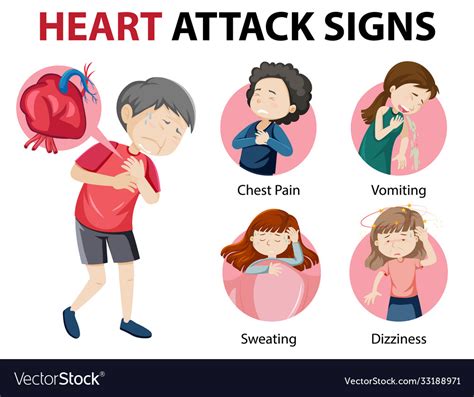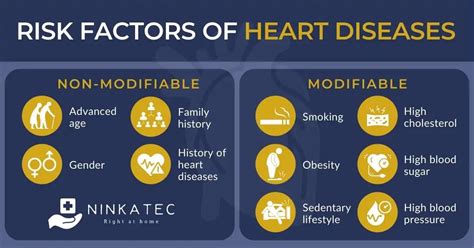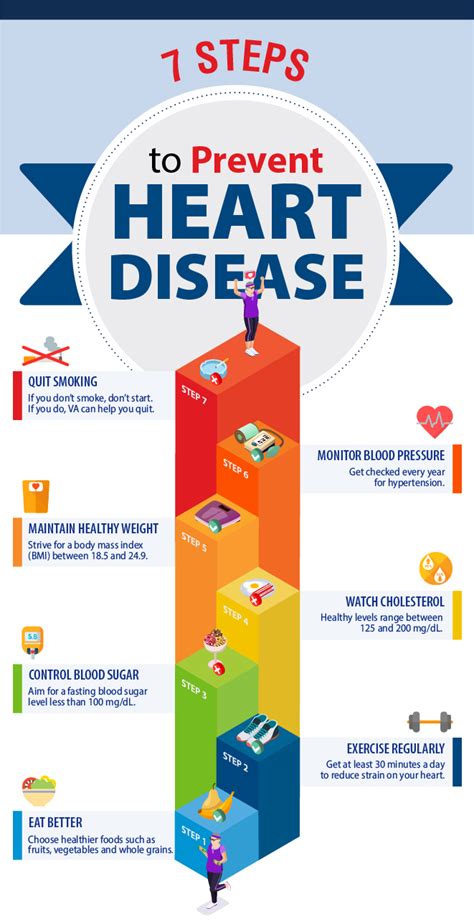Intro
Learn ladies heart attack symptoms, signs, and risks, including silent myocardial infarction, cardiac arrest, and coronary disease, to recognize early warnings.
Heart attacks are a leading cause of death worldwide, and it's essential to recognize the symptoms, especially in women. Unlike men, women often experience different symptoms, which can be subtle and easily missed. Understanding these symptoms can help save lives, and it's crucial to take immediate action if you or someone you know is experiencing them. In this article, we will delve into the world of ladies' heart attack symptoms, exploring the importance of recognizing these symptoms, the differences between men and women, and what you can do to protect yourself.
Heart disease is often perceived as a man's disease, but the reality is that it affects women just as much. According to the American Heart Association, heart disease is the leading cause of death in women, accounting for one in every three deaths. The symptoms of a heart attack can vary significantly between men and women, and it's essential to understand these differences to provide timely and effective treatment. Women are more likely to experience mild or vague symptoms, which can be mistaken for other conditions, making it crucial to be aware of the warning signs.
The importance of recognizing ladies' heart attack symptoms cannot be overstated. Prompt medical attention can significantly improve outcomes, reducing the risk of complications and death. However, women are more likely to delay seeking medical help, often attributing their symptoms to other conditions or worrying about being a burden. This delay can have devastating consequences, making it essential to educate women about the symptoms and encourage them to seek help immediately if they experience any unusual symptoms.
Understanding Heart Attack Symptoms in Women

Heart attack symptoms in women can be different from those experienced by men. While men often experience severe chest pain, women may experience more subtle symptoms, such as shortness of breath, fatigue, or pain in the arms, back, or jaw. These symptoms can be mistaken for other conditions, such as indigestion, anxiety, or a cold, making it essential to be aware of the warning signs. Women are also more likely to experience symptoms such as nausea, vomiting, or dizziness, which can be attributed to other conditions.
Common Symptoms of a Heart Attack in Women
Some common symptoms of a heart attack in women include: * Chest pain or discomfort: This can feel like pressure, tightness, or a squeezing sensation in the chest. * Shortness of breath: Women may experience shortness of breath or difficulty breathing, even when sitting still or engaging in light physical activity. * Pain in the arms, back, or jaw: Pain can radiate to the arms, back, or jaw, and may feel like a dull ache or a sharp, stabbing pain. * Fatigue: Women may feel unusually tired or weak, even after getting enough rest. * Nausea or vomiting: Some women may experience nausea or vomiting, which can be mistaken for other conditions. * Dizziness or lightheadedness: Women may feel dizzy or lightheaded, which can increase the risk of falls.Risk Factors for Heart Disease in Women

Several risk factors can increase a woman's likelihood of developing heart disease. These include:
- High blood pressure: Uncontrolled high blood pressure can damage the blood vessels and increase the risk of heart disease.
- High cholesterol: Elevated levels of low-density lipoprotein (LDL) cholesterol can increase the risk of heart disease.
- Diabetes: Women with diabetes are more likely to develop heart disease, especially if their condition is not well-managed.
- Obesity: Excess weight can increase the risk of heart disease, as well as other conditions such as high blood pressure and diabetes.
- Smoking: Smoking is a significant risk factor for heart disease, and women who smoke are more likely to develop heart disease than those who do not.
Reducing the Risk of Heart Disease
There are several steps women can take to reduce their risk of heart disease. These include: * Maintaining a healthy weight: Excess weight can increase the risk of heart disease, so it's essential to maintain a healthy weight through a balanced diet and regular exercise. * Engaging in regular physical activity: Regular exercise can help reduce the risk of heart disease, as well as other conditions such as high blood pressure and diabetes. * Eating a healthy diet: A balanced diet that is low in saturated fats, salt, and sugar can help reduce the risk of heart disease. * Managing stress: Chronic stress can increase the risk of heart disease, so it's essential to find healthy ways to manage stress, such as through meditation or yoga. * Getting enough sleep: Poor sleep can increase the risk of heart disease, so it's essential to get enough sleep each night.Diagnosing Heart Disease in Women

Diagnosing heart disease in women can be challenging, as the symptoms may be subtle or attributed to other conditions. However, there are several tests that can help diagnose heart disease, including:
- Electrocardiogram (ECG): An ECG can help diagnose heart disease by measuring the electrical activity of the heart.
- Echocardiogram: An echocardiogram uses sound waves to create images of the heart, which can help diagnose heart disease.
- Stress test: A stress test can help diagnose heart disease by measuring the heart's response to physical activity.
- Coronary angiogram: A coronary angiogram uses dye and X-rays to create images of the coronary arteries, which can help diagnose heart disease.
Treatment Options for Heart Disease in Women
Treatment options for heart disease in women depend on the severity of the condition and may include: * Medications: Medications such as beta blockers, ACE inhibitors, and statins can help manage heart disease. * Lifestyle changes: Lifestyle changes such as maintaining a healthy weight, engaging in regular physical activity, and eating a healthy diet can help manage heart disease. * Surgery: In some cases, surgery may be necessary to treat heart disease, such as coronary artery bypass grafting or percutaneous coronary intervention.Preventing Heart Disease in Women

Preventing heart disease in women requires a comprehensive approach that includes lifestyle changes, regular health check-ups, and management of risk factors. Some ways to prevent heart disease in women include:
- Maintaining a healthy weight: Excess weight can increase the risk of heart disease, so it's essential to maintain a healthy weight through a balanced diet and regular exercise.
- Engaging in regular physical activity: Regular exercise can help reduce the risk of heart disease, as well as other conditions such as high blood pressure and diabetes.
- Eating a healthy diet: A balanced diet that is low in saturated fats, salt, and sugar can help reduce the risk of heart disease.
- Managing stress: Chronic stress can increase the risk of heart disease, so it's essential to find healthy ways to manage stress, such as through meditation or yoga.
- Getting enough sleep: Poor sleep can increase the risk of heart disease, so it's essential to get enough sleep each night.
Importance of Regular Health Check-Ups
Regular health check-ups are essential for preventing heart disease in women. These check-ups can help identify risk factors and detect heart disease early, when it is more treatable. Some tests that may be included in a regular health check-up include: * Blood pressure check: High blood pressure can increase the risk of heart disease, so it's essential to monitor blood pressure regularly. * Cholesterol test: Elevated levels of LDL cholesterol can increase the risk of heart disease, so it's essential to monitor cholesterol levels regularly. * Blood glucose test: Diabetes can increase the risk of heart disease, so it's essential to monitor blood glucose levels regularly.What are the most common symptoms of a heart attack in women?
+The most common symptoms of a heart attack in women include chest pain or discomfort, shortness of breath, pain in the arms, back, or jaw, fatigue, nausea or vomiting, and dizziness or lightheadedness.
How can women reduce their risk of heart disease?
+Women can reduce their risk of heart disease by maintaining a healthy weight, engaging in regular physical activity, eating a healthy diet, managing stress, and getting enough sleep.
What tests can help diagnose heart disease in women?
+Tests that can help diagnose heart disease in women include electrocardiogram (ECG), echocardiogram, stress test, and coronary angiogram.
In conclusion, recognizing ladies' heart attack symptoms is crucial for timely and effective treatment. Women often experience different symptoms than men, and it's essential to be aware of these symptoms to provide prompt medical attention. By understanding the risk factors, symptoms, and treatment options, women can take control of their heart health and reduce their risk of heart disease. We encourage you to share this article with your loved ones and take action to protect your heart health. If you have any questions or concerns, please don't hesitate to reach out to your healthcare provider. Remember, knowledge is power, and by being informed, you can take the first step towards a healthier, happier you.
